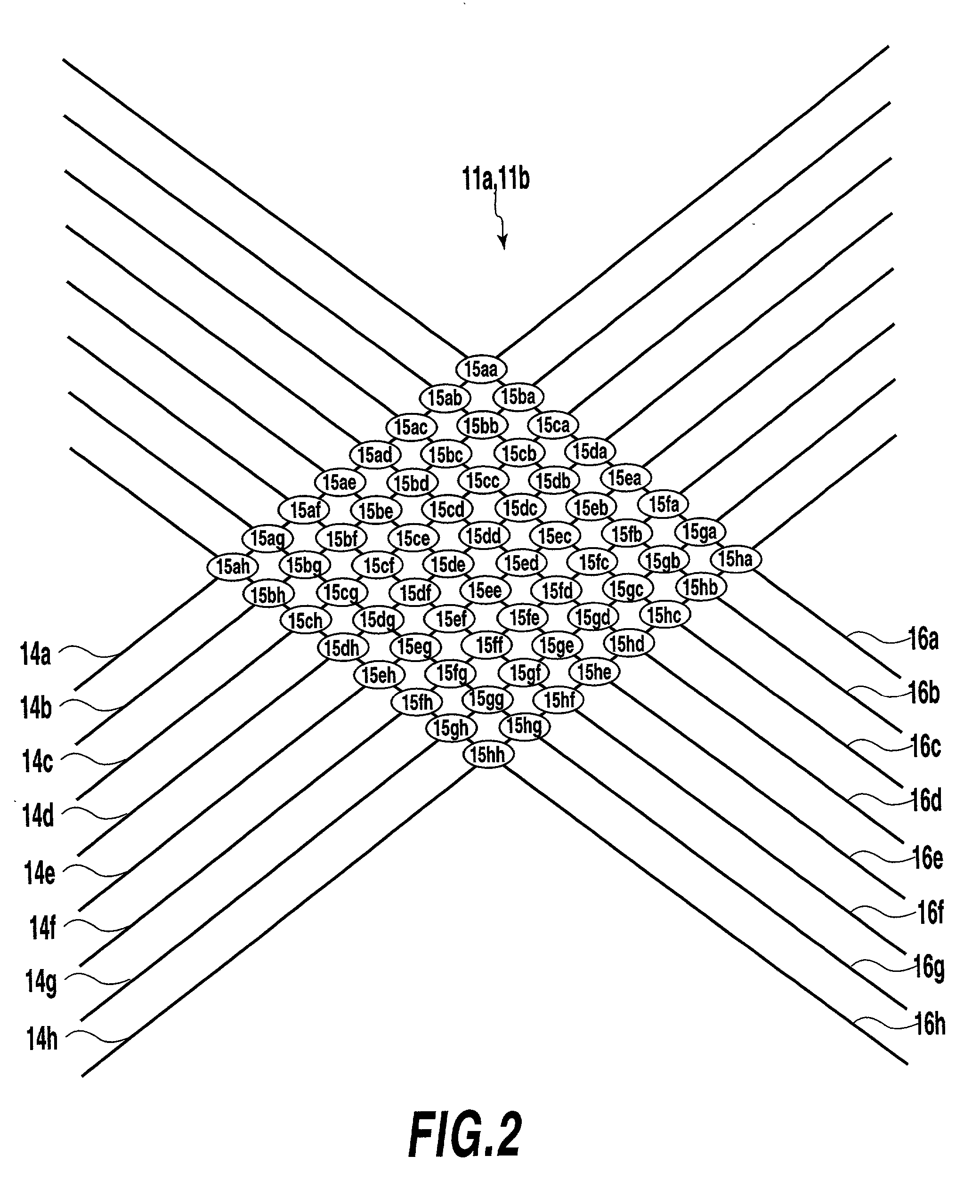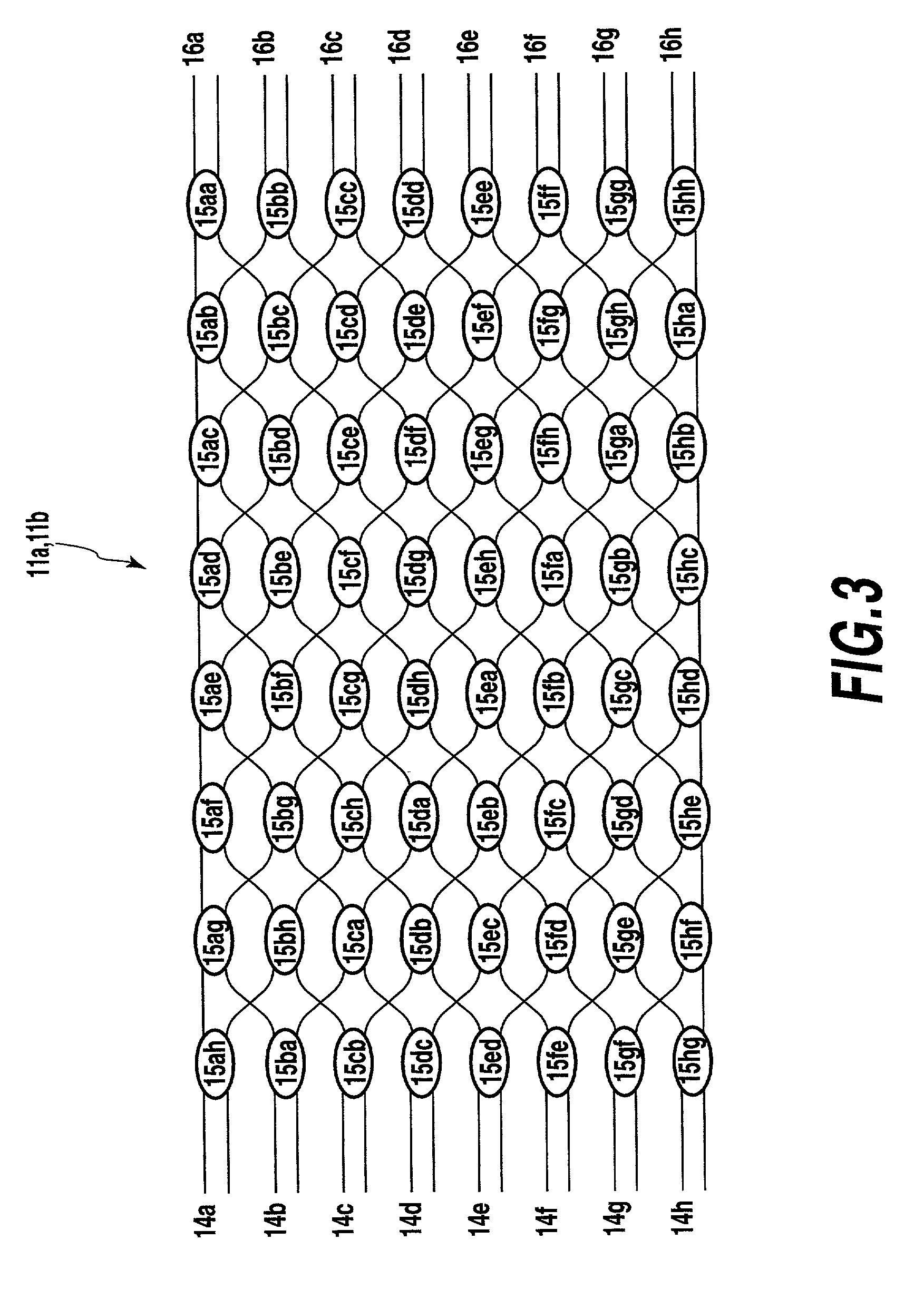CDMA encoder-decoder, CDMA communication system, WDM-CDMA communication system
a communication system and encoder technology, applied in multiplex communication, optical code multiplex, instruments, etc., can solve the problems of deteriorating the s/n ratio (signal to noise ratio) at the receiver, increasing the loss, and unnecessary optical pulses being produced to deteriorate the s/n ratio of the signal
- Summary
- Abstract
- Description
- Claims
- Application Information
AI Technical Summary
Problems solved by technology
Method used
Image
Examples
second embodiment
[0125] Since the light passes the delay lines 48a-48h twice, these delay lines are arranged so that the length difference from the neighbor differs by Lm / 2. The operation as an optical CDMA encoder-decoder is the same as that described in the
sixth example
[0126] Now a sixth embodiment of the present invention is explained below by referring to FIGS. 12 to 15. Explanation of the same components and numerals as those described above is omitted.
[0127] In this example, the optical CDMA encoder-decoder is constructed by connecting a first arrayed-waveguide grating, variable delay lines, and a second arrayed-waveguide grating in this order.
[0128] Specific examples are described below for detailed explanation.
[0129] FIG. 12 shows the configuration example of the optical CDMA encoder-decoder 1. The CDMA encoder and the CDMA decoder are formed on separate substrates using the configuration shown in FIG. 12.
[0130] In FIG. 12, the optical CDMA encoder-decoder 1 comprises an input part 53, arrayed-waveguide gratings 54a, 54b, waveguides 55a-55p, variable delay lines 56a-56h, and an output part 57.
modified example 1
[0131] The other configuration example of the variable delay lines described in FIG. 13 can be used in FIG. 12. Cascaded asymmetrical Mach-Zehnder interferometers in series can be used as the variable delay lines.
[0132] FIG. 13 shows the configuration example of the variable delay lines 56a-56h.
[0133] The variable delay lines 56a-56h are constructed using input waveguides 58a and 58b, 2.times.2 optical switches 59-1 to 59-N+1 (N: natural number), pairs of asymmetrical arms 60a-1 to 60a-N and 60b-1 to 60b-N, and output waveguides 61a and 61b.
[0134] Either 58a or 58b is used as the input, and either 61a or 61b is used as the output. In this case, the optical path length difference .DELTA.L of the pair of asymmetrical arms 60 is set at .DELTA.L.sub.N=2.sup.N-1c.tau..sub.0 / n. Various optical lengths can be set when changing the switching state of the 2.times.2 optical switch 59, and then the variable delay lines can be realized.
[0135] The variable delay lines are arranged so that the op...
PUM
 Login to View More
Login to View More Abstract
Description
Claims
Application Information
 Login to View More
Login to View More - R&D
- Intellectual Property
- Life Sciences
- Materials
- Tech Scout
- Unparalleled Data Quality
- Higher Quality Content
- 60% Fewer Hallucinations
Browse by: Latest US Patents, China's latest patents, Technical Efficacy Thesaurus, Application Domain, Technology Topic, Popular Technical Reports.
© 2025 PatSnap. All rights reserved.Legal|Privacy policy|Modern Slavery Act Transparency Statement|Sitemap|About US| Contact US: help@patsnap.com



